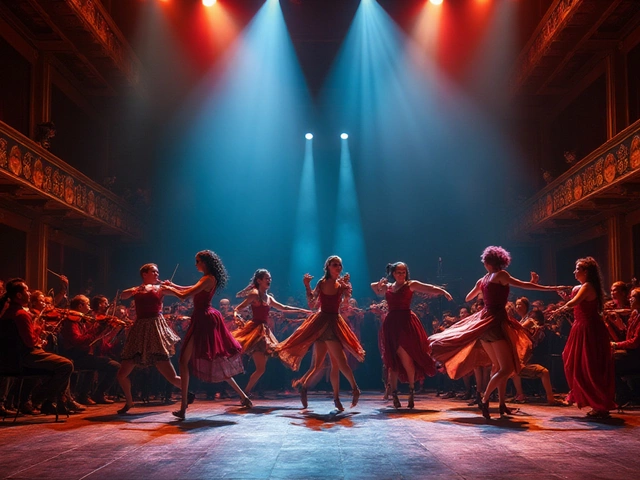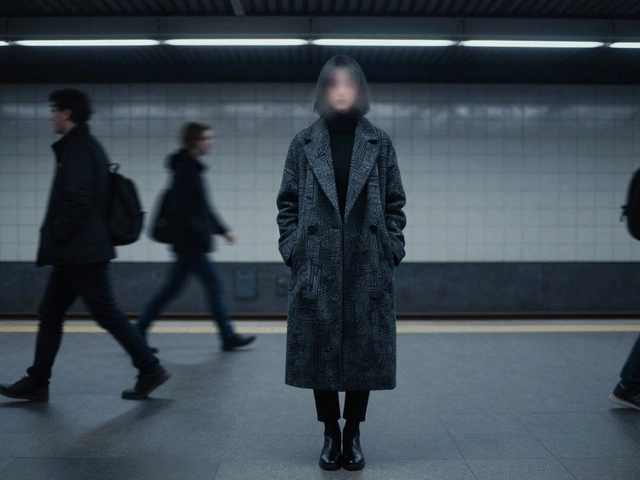If you’ve ever sat down with a set of watercolors ready to make something cool, you probably noticed it isn’t as chill as it looks. Watercolor can be downright unforgiving. Mess up a stroke? Good luck erasing it—watercolors love to stain, and trying to fix mistakes often leads to muddy colors or ripped paper. It’s not like oil or acrylics where you can just paint over and start fresh.
On top of that, the paint loves to do its own thing. You lay down some color and suddenly it bleeds where you didn’t ask it to go, turning crisp designs into happy accidents (or just plain messes). This unpredictability can drive beginners crazy. Even pros admit they’ve lost entire paintings to one rogue drop of water.
- Mistakes Are Hard to Fix
- Lack of Control and Predictability
- Paper Dependence and Quality Issues
- Fading and Longevity Problems
- Skill Curve and Learning Frustrations
Mistakes Are Hard to Fix
If you’re using watercolor, you’ll quickly realize—this paint doesn't let you take back your moves. Unlike acrylics, where a fresh layer covers up anything, watercolor stains the paper. One wrong stroke and you’re stuck with it. Even light colors are hard to hide under new layers, and trying to scrub out an error usually just makes a bigger mess or damages the paper’s surface.
Some artists try to fix mistakes by soaking up extra paint with a dry brush or blotting with a paper towel. That trick only helps while the paint is still wet, and even then, it’s not a guarantee. Once watercolor dries, it sinks into the paper fiber, and there goes any hope of erasing the mistake.
Here’s the reality for fixing errors in watercolor painting:
- Lifting: Dabbing lightly with a damp brush can soften an area, but won’t erase the pigment completely, especially with staining colors.
- Magic Eraser sponges: Some artists swear by gently using these on small spots, but they also risk scuffing the paper.
- Opaque details: You can try using white gouache or gel pens to cover tiny issues, but large areas are still a problem.
According to a survey from a leading art supply forum (2023), over 60% of watercolor beginners said “fixing mistakes” was their top frustration. Even experienced artists mess up; most make test swatches or sketches before painting for real, just to avoid accidents they can’t undo. If you want an art form where you can relax about errors, watercolor might not be your best friend.
Lack of Control and Predictability
If you’ve worked with watercolor paint for even a minute, you know what I’m talking about. The water doesn’t always behave. Brush a wash across the paper and sometimes the paint pools in odd spots, leaving streaks or dark edges you didn’t ask for. This happens because water wants to flow toward the lowest point, and paper absorbs it unevenly. The result? Splotches and blooms that show up when you just wanted a nice flat color.
Then there’s the fact that watercolor dries lighter—sometimes way lighter—than what you see when it’s wet. This means it’s hard to judge if the shade you picked is right until it’s too late. A lot of beginners get tripped up here, expecting their bold puddles to stay rich, but ending up with pale, wishy-washy colors after everything dries.
And the bleeding? That’s another headache. If you want sharp edges in your work, you’re in for a challenge. Even a little too much moisture on your brush can cause colors to spread outside the lines. It’s why so many watercolor artists do constant ‘test swatches’ on spare paper before committing—we call it a trust issue (with the paint).
Here are some common unpredictability issues people face with watercolor:
- Paint bleeding into nearby wet areas
- Unwanted backruns (those tide mark rings)
- Changing color intensity as paint dries
- Surprising color mixes when layers overlap
Did you know that in one small survey on an art forum, almost 80% of watercolor painters said controlling wet-in-wet effects is their top struggle? It’s no surprise—everyone deals with escaping paint at some point.
If you want a tip to gain more control, don’t overload your brush and always keep some dry paper towel nearby. Blotting out water as you go helps prevent runaways. And don’t be shy about making test swatches—every artist does it, no matter how long they’ve been at it.

Paper Dependence and Quality Issues
With watercolor painting, the paper you use isn’t just a background; it’s half the battle. Regular printer paper won’t cut it. If you use cheap or thin paper, you’ll end up with buckling, tearing, or paint bleeding through. True watercolor paper is made to handle lots of water and pigment, and it’s often made from cotton instead of wood pulp. But here’s the catch: quality paper can get expensive, and good brands like Arches or Saunders can cost several dollars per sheet.
The surface texture, known as "tooth," and weight (listed in pounds or grams per square meter) both play a big role in how your painting turns out. Lighter paper (like 90 lb) crumples fast, while heavy paper (140 lb or 300 lb) stays pretty flat even when soaked. For beginners, seeing your painting warp or fall apart after all that work feels brutal.
Here’s a snapshot comparing different paper weights:
| Paper Weight | Usage | Common Problem |
|---|---|---|
| 90 lb / 190 gsm | Sketching, practice | Buckles with water, easy to tear |
| 140 lb / 300 gsm | Most paintings | Can warp a little, but usually holds up |
| 300 lb / 640 gsm | Wet-on-wet, lots of washes | Expensive, but almost no buckling |
It gets trickier: not all watercolor paper brands handle paint the same way. Some papers let colors blend beautifully, while others suck up the pigment, making your painting dull and faded. Beginners often don’t realize that switching to a better paper can completely change their results.
If you want fewer headaches, invest in acid-free, 100% cotton paper at 140 lb minimum. If you’re just testing stuff out, it’s smart to buy pads or sample packs to see what works. Remember, even expensive paints won’t look good on bad paper, so this is one disadvantage that can really make or break your painting.
Fading and Longevity Problems
One of the big headaches with watercolor painting is that your masterpiece can literally fade away. Watercolor pigments are not all created equal, and some break down when hit by sunlight. If you hang a watercolor in bright light, you might notice the colors start to wash out after just a few years. Paintings behind glass or tucked in a dark spot stick around longer, but who wants to hide their work?
Let’s talk numbers. Some art conservators mention that around 40% of student-grade watercolors noticeably fade within 5 years if exposed to daylight, while high-quality professional pigments do much better but still aren’t immune. Here’s a quick peek at how different types of watercolor paints hold up:
| Type | Average Lifespan (exposed to light) |
|---|---|
| Student-Grade Watercolors | 2-5 years |
| Professional Watercolors | 10-30 years |
| Lightfast Pigments | Up to 75 years |
Even if you shell out for the best, humidity and pollution can mess up your painting. Watercolors are also more sensitive to mold or smudging compared to oil or acrylic paintings. Water exposure is always a risk, and a single spilled drink or bit of rain can turn hours of work into a blob.
If you want to keep your watercolor painting safe, here are some real tips:
- Frame with UV-protective glass. This helps slow down the fading process big time.
- Use only lightfast, professional-quality watercolor paints (check your paint labels for ASTM lightfastness ratings).
- Keep artworks out of direct sunlight and store them in low-humidity places.
- Avoid hanging them in kitchens or bathrooms where steam and spills are common.
So, while watercolor painting can look amazing, just know it sometimes feels like you’re painting with disappearing ink unless you take real steps to protect your work.

Skill Curve and Learning Frustrations
Mastering watercolor doesn’t happen overnight. This medium has a steep and often frustrating learning curve, even if you’ve dabbled in other painting techniques before. The big problem? Water behaves differently on every type of paper, and colors keep changing as they dry. That means what looks perfect when wet often dries lighter or patchy. A lot of beginners struggle with the fact that colors never land where you put them.
There’s also a lot to remember: how much water to use (always too much or too little at first), which brushes work for what, how quickly watercolor dries, and how blending can quickly turn to blotching. You might spend hours just learning to control a basic wash before you even get to layering or fun techniques like wet-on-wet. According to the Watercolor Society of America, “It typically takes a year or more of regular practice before most artists feel comfortable with the unpredictable results.”
“Watercolor painting requires both technical mastery and the patience to accept mistakes. That’s why it both humbles and excites artists of all skill levels.”
- Jean Haines, international watercolor artist
If you want fast results, watercolor painting can be discouraging. Expect to use up entire pads of paper (and not those cheap ones, either) just practicing brush and water movements. Even pro painters admit to hundreds of failures for every painting they like.
- Be patient—progress is slow but real.
- Try short practice sessions (15-20 minutes) instead of marathons to avoid burnout.
- Keep your first works—review them after a month to see real growth.
- Watch beginner mistakes on YouTube—seeing others struggle actually helps.
On the upside, every small breakthrough with watercolor feels earned. Those tiny wins add up and, over time, the biggest frustration becomes a point of pride.





